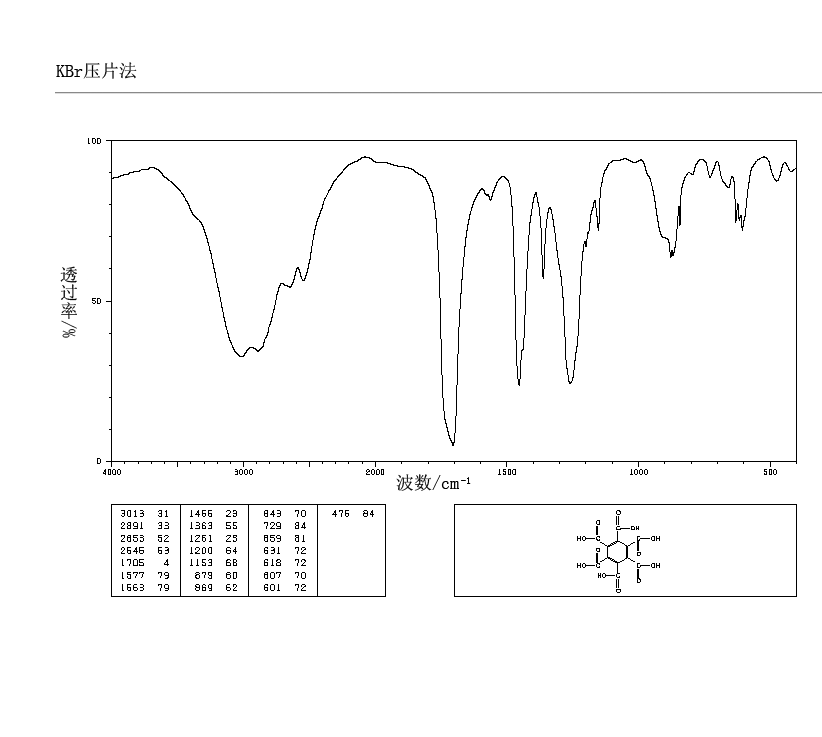Mellitic acid
- Benzenehexacarboxylic
- Graphitic acid
- Melitic
Silky needles
Fixed
288 ° C.
- PKS1 = 1.40
- PKa2 = 2.19
- PKS3 = 3.31
- PKs4 = 4.78
- PKs5 = 5.89
- PKs6 = 6.96
Slightly soluble in water and ethanol
Attention
Template: Infobox chemical / molecular formula search available
Mellitic ( benzenehexacarboxylic, also graphite acid) is an acid that was first discovered in 1799 by Martin Heinrich Klaproth in the mineral mellit (honey stone), the aluminum salt of the acid.
Representation
Mellitic can be prepared by heating mellit with ammonium carbonate. With an excess of ammonia, the aluminum ions are precipitated as hydroxide, and separated; There remains the ammonium salt of mellitic acid. The acid can also be prepared by oxidation of pure carbon or hexamethylbenzene, in the cold by alkaline potassium permanganate, or by hot concentrated nitric acid.
Properties
Mellitic crystallizes in fine silky needles, and is soluble in water and ethanol. It is a very stable compound: chlorine, concentrated nitric acid and hydrogen iodide have no corrosive effect. Mellitic decomposed by dry distillation into carbon dioxide, water, and pyromellitic dianhydride, C10H2O6; in the presence of lime takes place completely decomposed into carbon dioxide and benzene. A reaction of the acid with an excess of phosphorus pentachloride is the acid chloride, which crystallized in needles, melting at 190 ° C.
The high stability of Mellitsäuresalze and their property as an end product of the oxidation of polycyclic aromatic hydrocarbons, which occur in the solar system, making them possible candidates for organic substances in the Martian soil.








